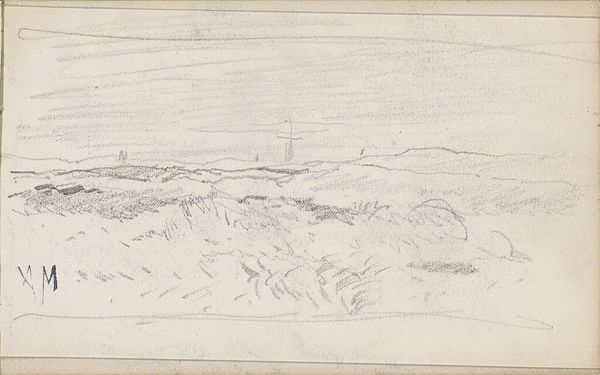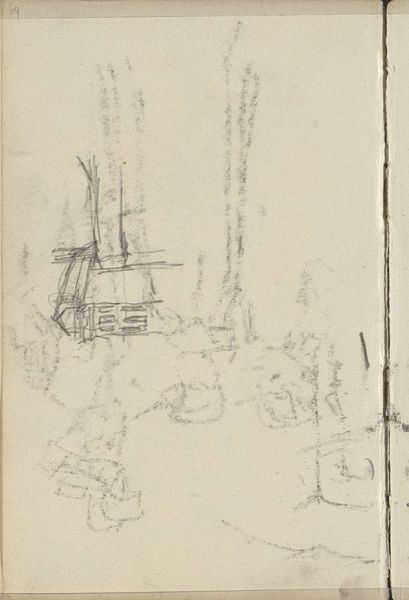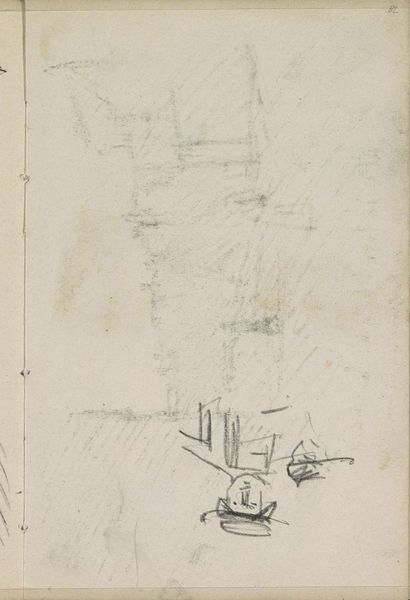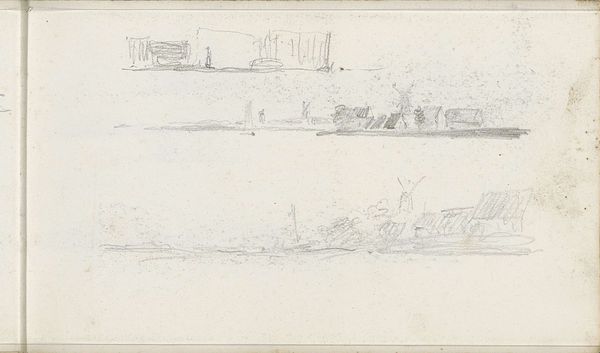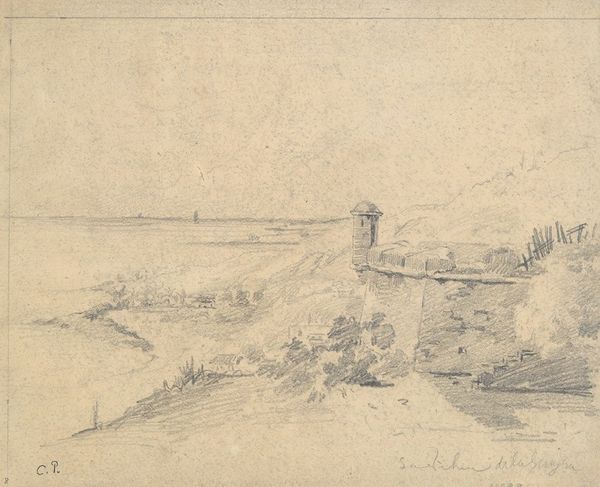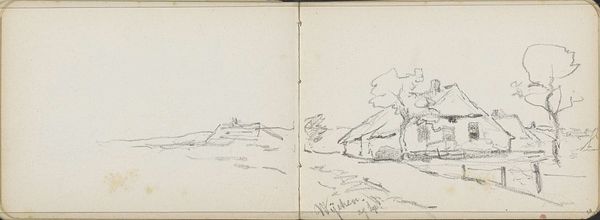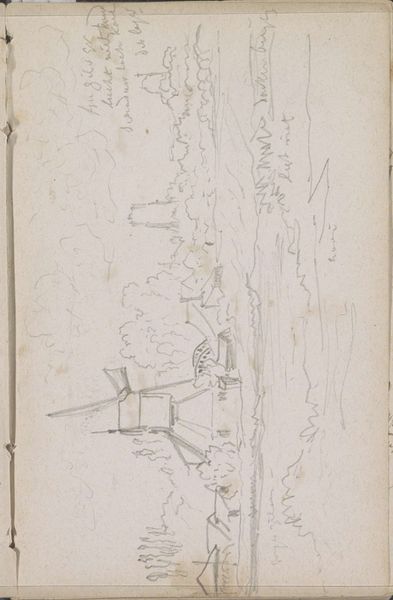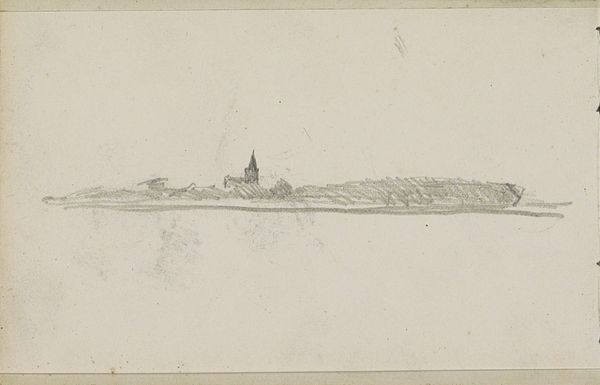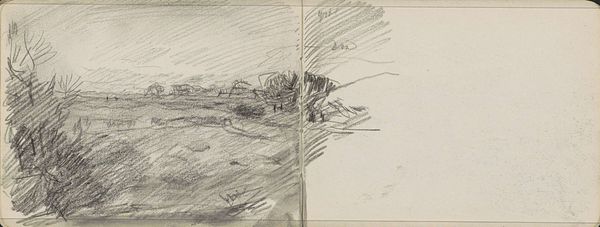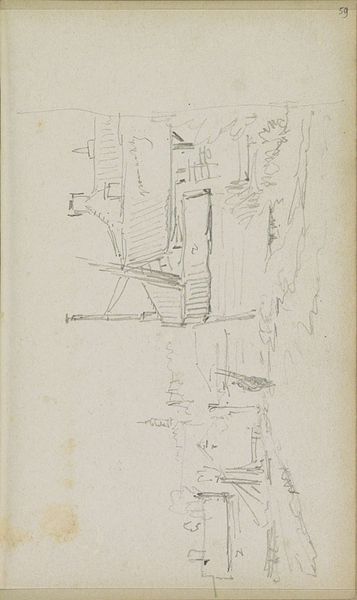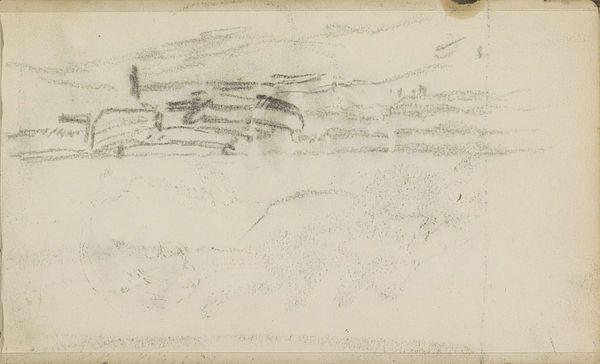
Copyright: Rijks Museum: Open Domain
Editor: This pencil drawing, "Landschap met een molen" or "Landscape with a Windmill," by Johan Hendrik Weissenbruch, seems so understated. There’s almost a hazy quality to the landscape. What strikes you most about it? Curator: I see this drawing as a testament to the democratization of art. The readily available and inexpensive nature of pencil as a medium, allowed artists to capture everyday scenes, and this is crucial to understanding 19th century Realism. Think about the rising middle class; their increasing influence on art led to the appreciation of scenes like this—mundane yet full of human life. Editor: Democratization is an interesting way to put it! Was the windmill itself a symbolic subject? Curator: Absolutely. In Dutch art, windmills have often symbolized prosperity and industriousness but beyond that, they are national emblems. But Weissenbruch presents it so simply, stripped of grand symbolism. It reflects a growing movement where national pride was found not in grand historical narratives, but in the common landscape. Does the positioning of the windmill impact its reception? Editor: It's quite centered, almost like the focal point of the entire Dutch identity within that landscape. What are your overall thoughts? Curator: The drawing speaks volumes about the evolving relationship between art and society in the 19th century. The choice of subject, the medium, and the artist’s subtle hand all point toward a significant shift in how art functioned within Dutch culture. Editor: So, it's less about the windmill and more about how Weissenbruch invites the common viewer to contemplate it? Curator: Precisely. It reminds us to question what defines national identity and who has the power to shape it through art.
Comments
No comments
Be the first to comment and join the conversation on the ultimate creative platform.
